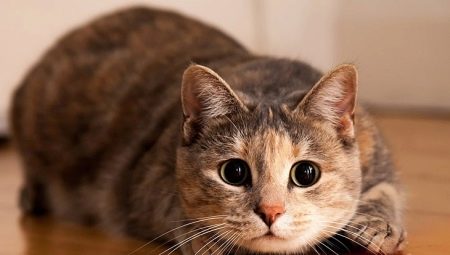Who keeps cats constantly, lives in their presence since childhood, knows everything about the habits of these animals and can tell a lot about them no worse than a specialist. Those who recently decided to connect their lives with cats find that animals are difficult to manage, difficult to negotiate and in general, it is difficult to understand who is the owner of the house - a cat or a person.
Suddenly you realize that the cat does not sleep in its crib, but in the owner’s, feeding does not go as planned. The animal itself taught the owner with his whims to give the food that she wants. After observing the pet, you come to the conclusion that you need to live with her in mutual respect, not to play by her rules, but not to impose your own, to look closely, study and understand each other. In order for the joint life to be successful, we turn to the psychology of cats, tell you what different forms of pet behavior can mean.
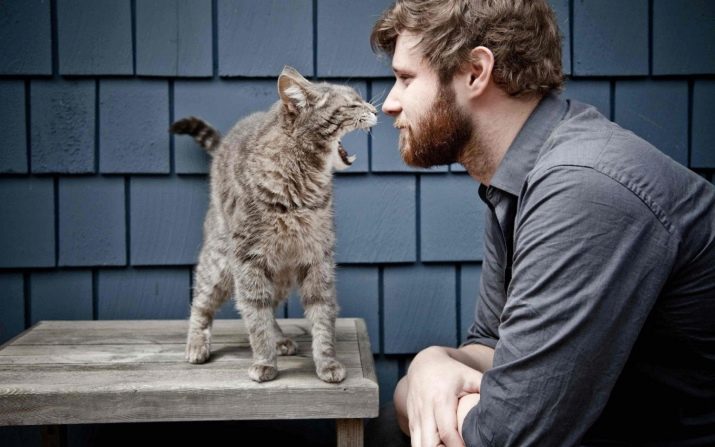
What is the tail talking about?
There is an expression “to keep the tail with a gun”, that is, raised up. That’s what they say when they tune in to positive. The situation observed in cats - if they walk around the apartment with their tail up, it means they are happy with everything. At this moment it is easy to communicate with them, they take caresses, if desired, can play with the owner.
A twitching tail should alert the owner, as it reflects a manifestation of dissatisfaction, indicates that the cat is nervous. If at this moment to stick to the animal with its caresses, you can encounter aggression.
If the cat's muscles contract at the base of the tail, causing it to twitch, it is nervous and constantly licks, most likely it has a nervous strain.
You need to unobtrusively pay him more attention, and if the situation is running, consult a veterinarian who will prescribe sedatives.
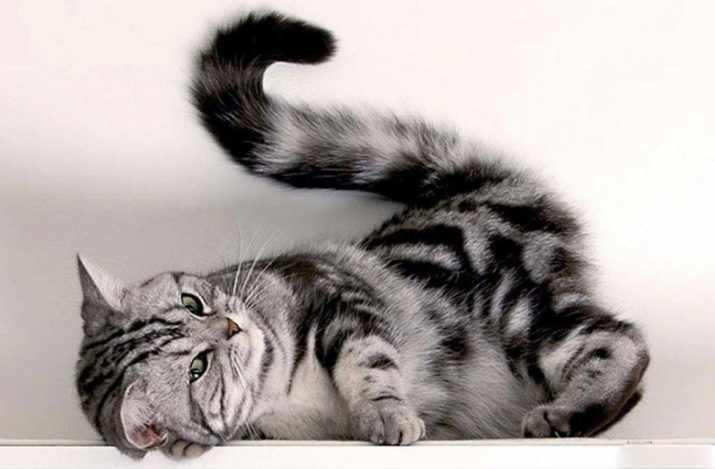
If a cat squats and tightens its tail, hiding it between its paws, it means that it is very scared. Such a pose can be observed when animals find out relations between themselves and the dominant cat introduces the opponent into a state of stupor.
There are more serious reasons forcing a pet to tighten its tail - they relate to diseases. If a cat in a prone position, tightens its tail, trembles and cannot stand, most likely it has diabetes, accompanied by convulsions. The animal urgently needs to be taken to the veterinarian.
Tightened tail, nervous behavior and inability to sit down may indicate injury in the hip zone or in the spine. In this case, a veterinarian is also needed.
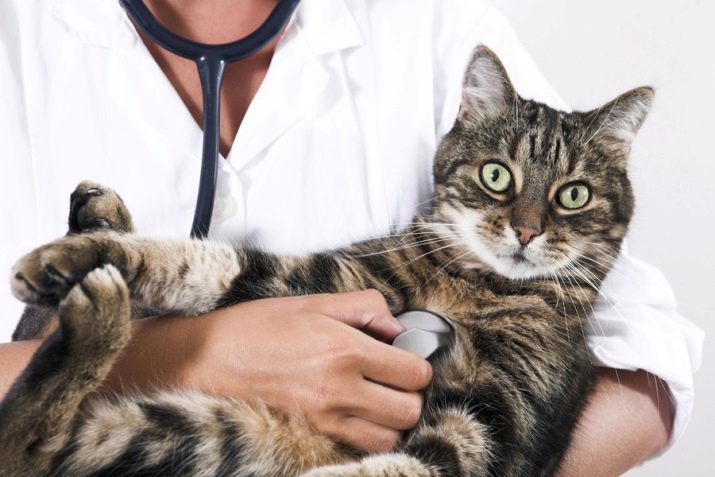
Why does a cat bend its back?
A curved back with reared hair, a protruding nape and a fluffy tail indicates a strong fright of the animal. At this point, you can not touch it, in a stressful condition the cat can hit by releasing its claws or bite. It is better to step aside and calm her in a gentle voice. Try to understand the source of fear and eliminate it. A cat may be frightened of an unfamiliar thing seen in an unexpected place, or a master dressed in a long, unusual robe. When she realizes that this is the owner, she will gradually calm down.
Little kittens sometimes, while playing, bend their backs, up their fur and jump sideways.
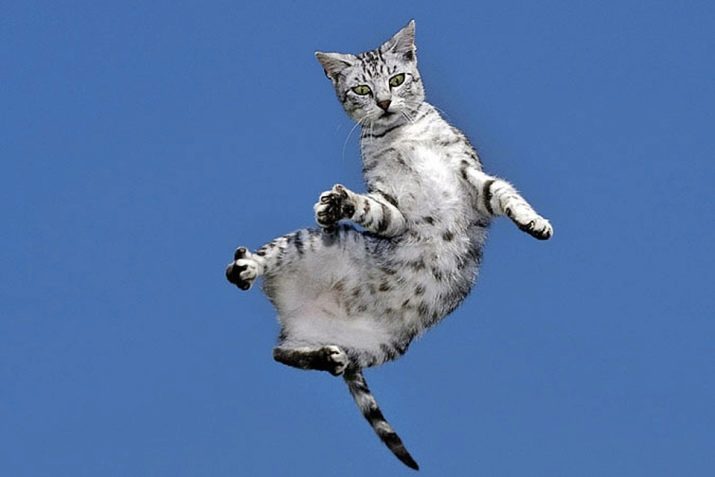
Ears - an indicator of behavior
Two small ears can tell about the mood of a cat, you just have to watch them. Direct and open speak of complete peace and detachment from what is happening. If at such a moment you turn to a pet with a phlegmatic character, he will show complete indifference, even his head will not turn toward the owner, but one ear will still turn - natural curiosity will force.
If the cat’s ears are tightly pressed to the head, the pupils are dilated, and she contracted like a spring - the animal is in a pose of extreme irritation and anger. Better to step aside and wait until she calms down.
The ears, turned back, give out the excitement of the pet - he wants and is ready to play, catch up, hide. In a word, to hunt.
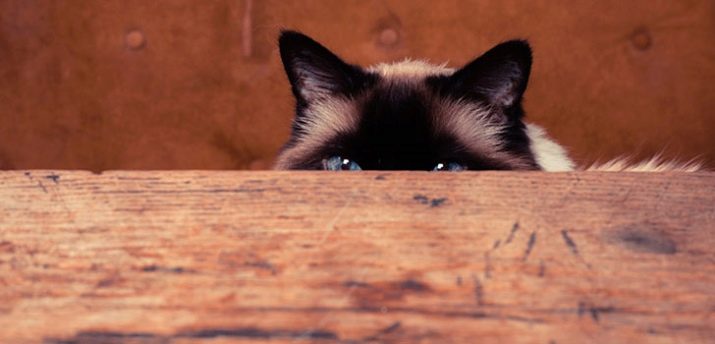
Cat habits
You can often notice how the cat rubs affectionately on its legs or various objects, at this moment it leaves a smell. His pheromones marks a person, furniture, clothes. Especially new things or clothes in which they came from the street, as it has foreign smells. The animal must make them their own. The cat also gently rubs its legs as a sign of manifestation of its feelings.
Another cat-like habit - rolling on his back belly up. This happens for several reasons: she exposes her belly only to the one whom she unconditionally trusts, while she purrs and allows herself to be stroked. A cat may fall on its back in the event of protection.
At such moments, she behaves menacingly, pushing forward her legs with open claws.
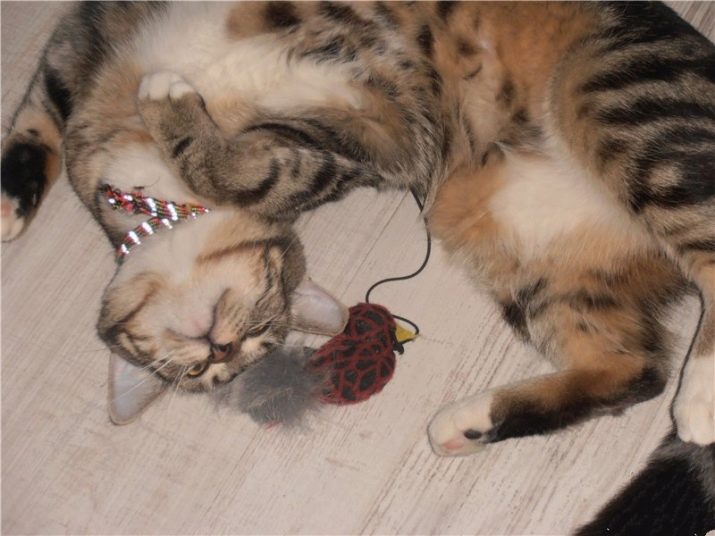
The gaze of a fixed animal
A long look speaks of the request. For example, a cat sits for a long time and looks at an empty plate, which means it asks for food, if it sits and looks at the balcony door, it asks to open it. In addition to the request, a long look can mean a lot, you should take a closer look at it:
- the cat catches the threat or is unhappy with something;
- asks to play;
- looks so from an excess of feelings.
What the gaze means can be understood from the further behavior of the animal.

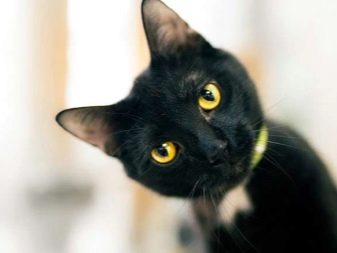
Variety of sound signals
The cat is able to meow, rumble, snort, change the tone of voice from low to high. You can greatly facilitate communication with the animal, if you understand his voice requests and warnings.
- The hissing cat is scared, she is trying to defend herself or scare the enemy.
- Animals snort for various reasons - they worry; something hit my nose; a runny nose begins; an inflamed tooth root can give pain in the nose. If the animal snorts frequently, it is best to consult a veterinarian so as not to miss the disease.
- Purring betrays love and a good mood for pets. But if the purr almost turns into a growl, then the cat expresses dissatisfaction. There are other reasons for cat purrs. British scientists have found that purring sound at frequencies of 20 and 140 hertz helps the animal recover, promotes bone healing, relieves swelling, shortness of breath, and reduces pain.
- A jerky "cooing" meow cat usually meets the owners after absence. She waited, glad to be back, so with all her appearance she was reporting her feelings. At this moment, you need to caress the animal, otherwise it will be offended.
- A lingering meow may be emitted by a worried cat, for example, if the owner leaves the house. The pet sits for a long time in front of the closed door and meows with a howl. When the owner returns home, the cat often follows him on the heels and meows again, but with a different tone - joyful, interspersed with a mournful one, as if telling how lonely she was.
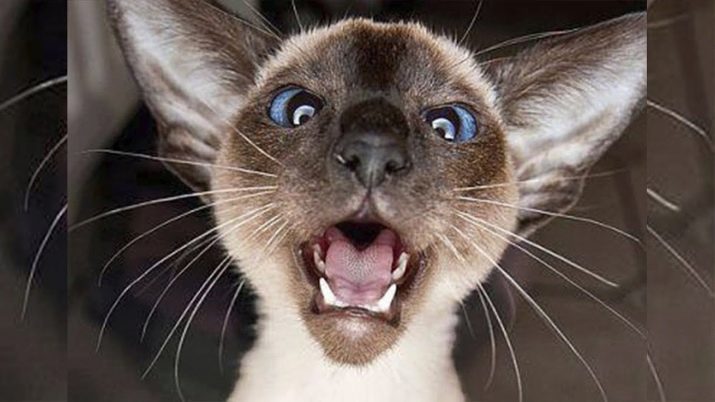
Despite the emphasized self-sufficiency, cats are very fond of and need us. If you look closely at the behavior of the animal and learn to understand it, you can become the best friends with the cat, and also not miss the problems with its health.
The psychology of cats is described in the next video.
